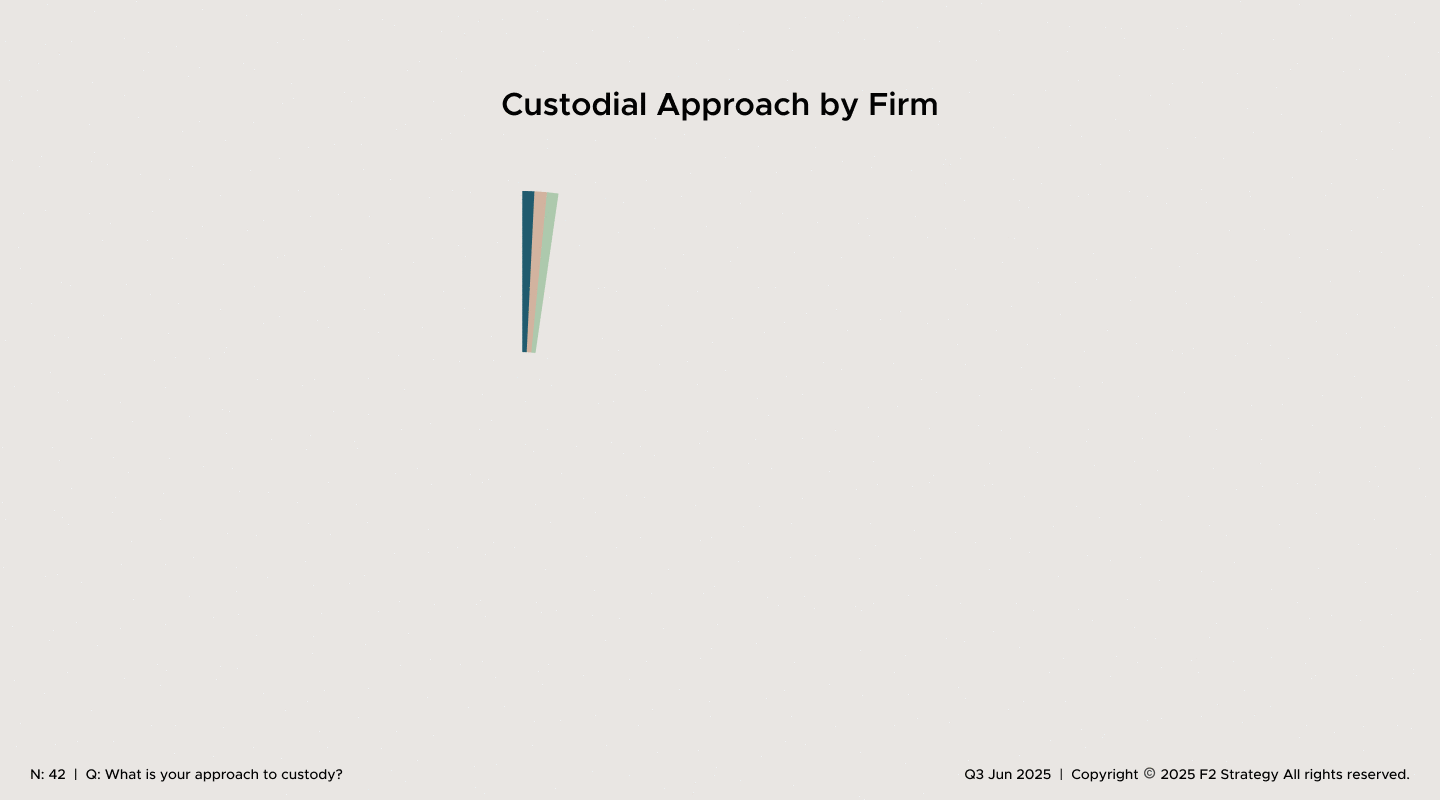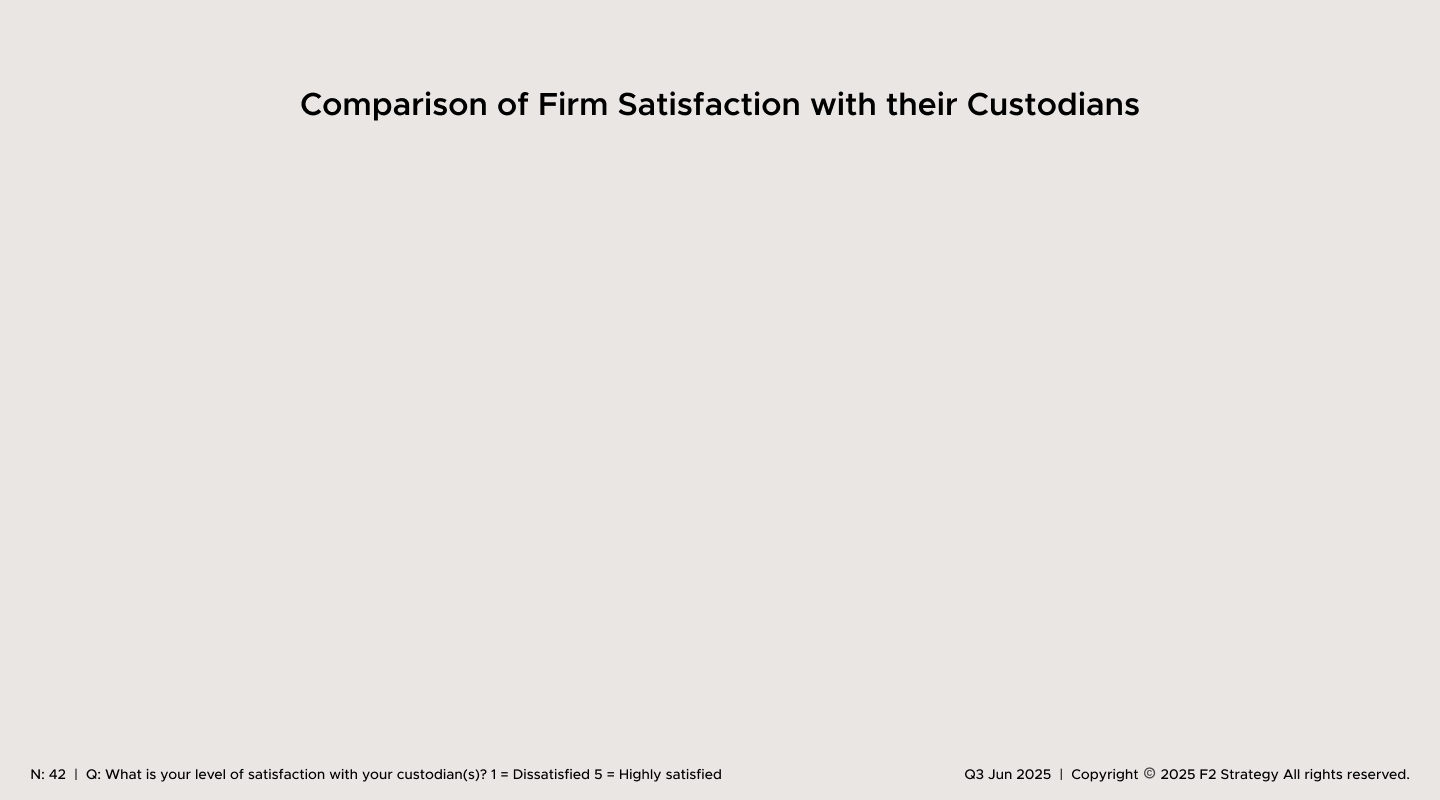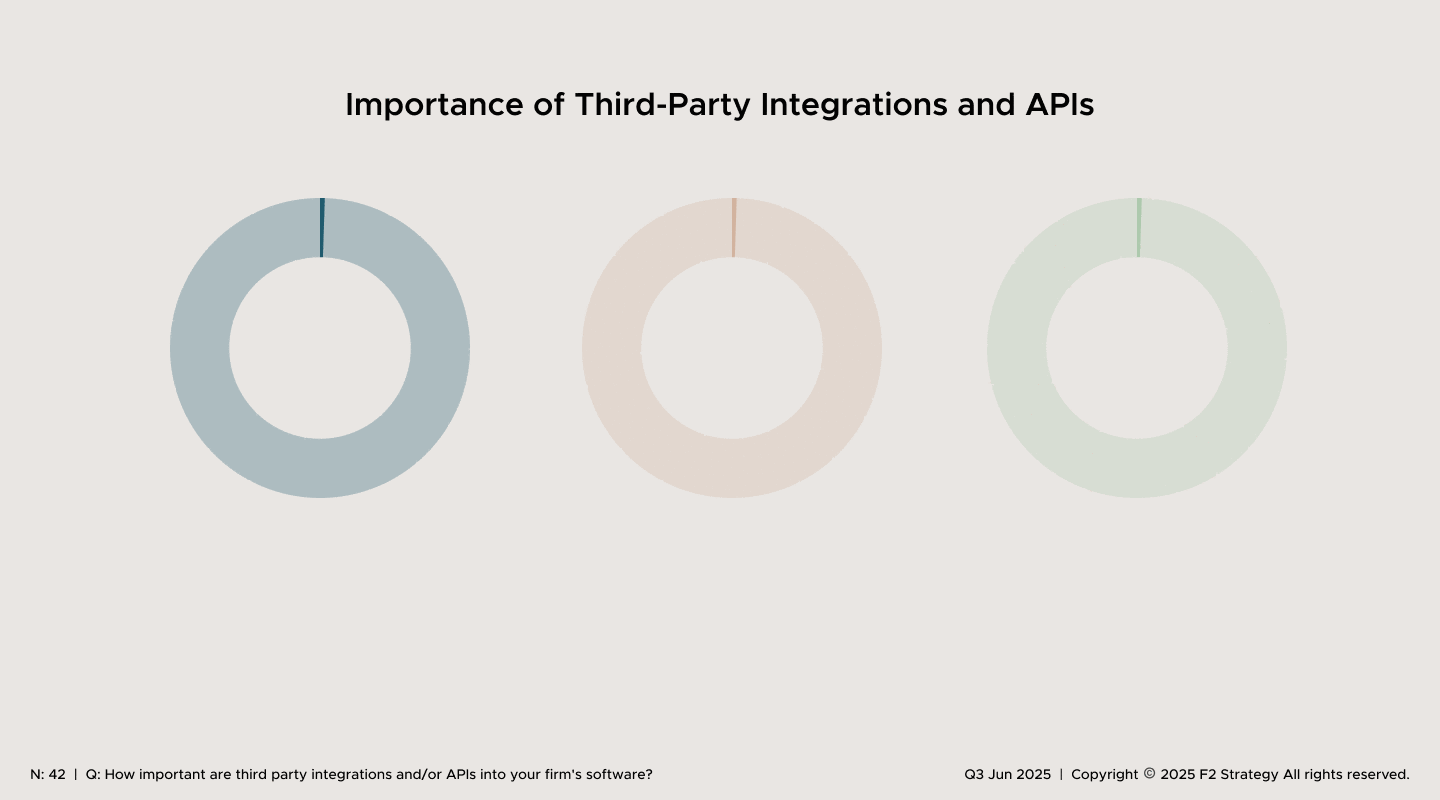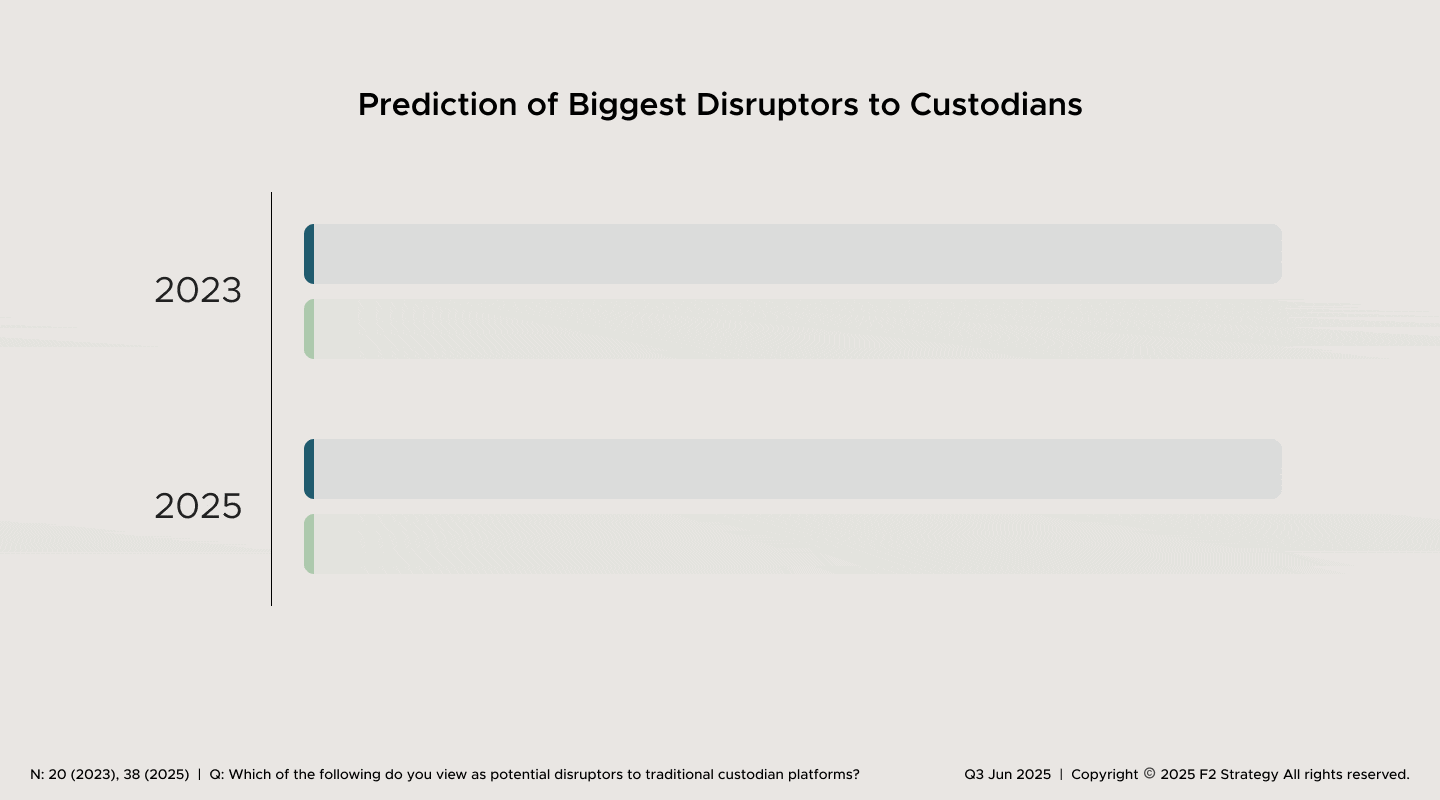Wealth managers take many different approaches to their custodial relationships, from working with one custodian, to working with many, and even doing it themselves. So which one is ideal for advisors? No one actually knows.
Each has advantages and flaws. F2’s recent research, which gathered responses within its national cohort of wealth management firms representing $49.9 trillion in AUM, indicated that whichever approach a firm uses, it wishes it was doing something else. Multi-custodian firms feel tired of managing different custodian accounts that require different workflows, while single-custodian firms feel stressed that switching clients to their custodian creates a negative experience.
The results of this research makes it clear that the industry is long past-due in creating a solution that would give advisors the ability to change custodians, transfer assets, and switch accounts faster and painlessly.
Business Areas
Single-Custodian
Multi-Custodian
Self-Clearing / Custody
Technology
Single Custodian
Less complex integrations, as you have one custodian to feed data.
Multi Custodian
More complex integrations, with multiple feeds.
Self Clearing/Custody
Fully in your control and data must be well-organized and governed.
Operational Workflows
Single Custodian
Simple, but constrained. Workflows run through the context of the one custodian.
Multi Custodian
Complex. Workflows must accommodate the many nuanced differences across multiple custodians.
Self Clearing/Custody
Simple with flexibility and added responsibility from full control of every workflow needed.
Client Experience
Could impact new clients through acquisition as noted under “Inorganic Growth.”
Each client relationship likely has only one custodian experience.
A firm-designed digital platform can support a fully branded client experience.
Advisor Experience
One set of terms, one way of doing things, and one support model.
Must learn different ways of doing similar tasks across multiple custodians.
One set of terms, one way of doing things, and one support model.
Inorganic Growth
May force a transition of assets between custodians: has client impact.
Can acquire new assets without transitioning clients between custodians: little, if any client impact.
Will force a transition of assets between custodians: has client impact.
Organic Growth
May have access to a custodial referral network, but not guaranteed.
May have access to a custodial referral network, but not guaranteed.
Will not have access to custodial referral network.
Cost
$ - most cost-efficient option.
$$ - more overhead on technology, process design, execution.
$$$ - cost of ownership may flip as scale is achieved.
The full report benchmarks custodial relationships since F2’s last study of the topic in 2023 and reveals areas of continuing challenge and opportunities for improvements.

Insights and Actionable Intel:

Insights and Actionable Intel:

Insights and Actionable Intel:

Insights and Actionable Intel: